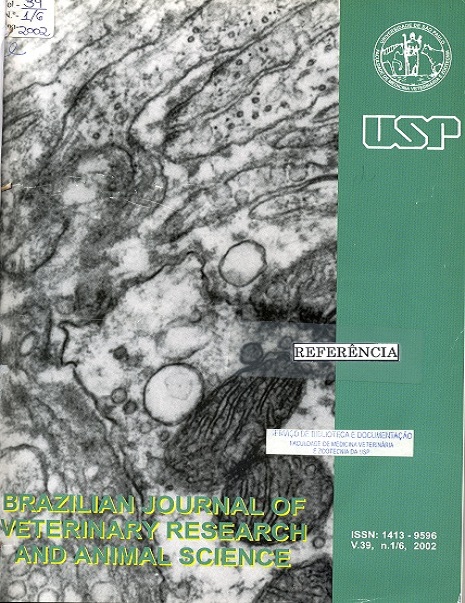Inbred F344 rats as a biologic model of intra-abdominal sepsis
DOI:
https://doi.org/10.1590/S1413-95962002000100004Keywords:
SEPSIS, Rats, Models (Biological)Abstract
Aiming to design a biologic model of acute intra-abdominal sepsis for experimental studies, conventional, isogenic rats F344 were infected with the bacteria Escherichia coli (E.coli), strain 11775, serotype H7:01:K1. Six hours after inoculation with E. coli, the animals - males and females - showed the following symptoms: piloerection, hyperpnea and decreased motor activity. The lethal dosis (LD50), was 6 x 10(5) CFU/ml, analyzed in 32 males and 32 females. The highest mortality rate was observed on the first 24 hours. Liver dysfunction, common in intra-abdominal sepsis, was evaluated at 0, 24, 48 and 168 hours after inoculation, by means of serum enzyme activities. Study of the migration of polymorphonuclear-neutrophil cells (PMN) and mononuclear-macrophage ones (MN) showed a significant increase of PMN in E. coli inoculated males (z >; 4.7; P; 6.2; P < 0.0003), when compared to control groups. As for MN cells, there were no differences between inoculated and control groups, in males (z = 2.3; P = 0.0107) and in females (z = 1.8; P = 0.0359) as well. In conclusion, these results show that inbred F344 rats are adequate biologic models for studies of acute, intra-abdominal sepsis.Downloads
Downloads
Published
2002-01-01
Issue
Section
UNDEFINIED
License
The journal content is authorized under the Creative Commons BY-NC-SA license (summary of the license: https://
How to Cite
1.
Damy SB, Ebisui L, Spinelli MO, Osaka JT, Tolosa EMC de, Ortiz SCB da C. Inbred F344 rats as a biologic model of intra-abdominal sepsis. Braz. J. Vet. Res. Anim. Sci. [Internet]. 2002 Jan. 1 [cited 2025 Feb. 21];39(1):21-6. Available from: https://revistas.usp.br/bjvras/article/view/5934





